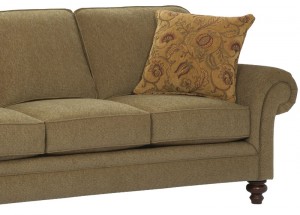6 Important things to consider when you are choosing a sofa
A sofa is one of the biggest furniture investments you’ll make — and one of the most permanent. Even if you’re just buying a budget one for a temporary fix, you know that it’ll eventually get less and less comfortable and the prospect of replacing it will be filed in that ‘Someday’ category off in the distance. Before you know it, a decade or more has passed, and that impulse purchase has become an uncomfortable and less than attractive part of your life. So give some thought to your sofa before you buy.

Quality sofas should feel solid and heavy. Flop around on one to test its sturdiness, then lift it up by the corner and shake it a bit. If it feels light or wobbly, take a pass. Look for a frame made from a kiln-dried hardwood or, alternatively, high-quality hardwood plywood or marine plywood. Eight-way, hand-tied springs are a hallmark of fine furniture, but sinuous S-shaped springs can provide nearly as much comfort at a fraction of the cost. Drop-in coil springs are also a less costly alternative.
Most seat cushions have a core of polyurethane foam; the denser the foam, the heavier it is and the longer it will last. In the cheapest furniture, the cushion is filled with just the polyurethane foam core. In better furniture the core is wrapped with Dacron batting. Higher-quality options include poly-down cushions, which have down mixed with the batting; ‘spring-down’ cushions, which feature a core of springs surrounded by foam and feathers; and all down, which is all feathers (and all work – so avoid this unless you have a slew of servants to ‘fluff’ the cushions constantly).
The best sofas have joints that are double doweled and fitted with corner blocks that are both glued and screwed (not stapled) into place. Quality pieces have legs that are part of the frame, not just attached to it (although removable feet do make it easier to get items through tight doorways).
Buy the best-quality sofa that you can afford. Your purchase will be amortized over many years. Plus, it’s usually cheaper to reupholster a good sofa than to buy a new one of comparable quality.
Where to Start
There would seem to be infinite options when it comes to choosing a sofa. You might think you know exactly what you want, but once you walk into a shop or browse images online, the styles, shapes, and customization alternatives can become overwhelming. Save yourself the time, money, and potential buyer’s remorse and use these tips to get a clear idea of what you want (and what you need!) before you start the hunt.
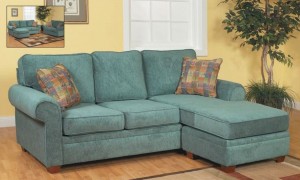 1. Consider size first. If you have a bigger living room, you’ll need to decide exactly how much of the living room you want your sofa to fill. How many people will be using this space typically? Do you need to include a loveseat or other chairs?
1. Consider size first. If you have a bigger living room, you’ll need to decide exactly how much of the living room you want your sofa to fill. How many people will be using this space typically? Do you need to include a loveseat or other chairs?
If it is a small area then a compact sofa or an chaise sofa will probably fit the bill. These are a modern twist on the sectional sofa. Unlike sectional couches that have a separate cushion for each space, chaise sofas have one long cushion that sits at an angle from the rest of the couch. One versatile chaise sofa option comes with a reversible chaise. Perfect, if you like to rearrange furniture all the time like I do, or if you are planning a move in the future.
You do not have to be traditional in your seating arrangements either. Think about using two loveseats in a smaller space, or a sofa recliner, so everyone can chill – not just the guys! And a sofa-bed will give you some practical options when friends or family want to stay.
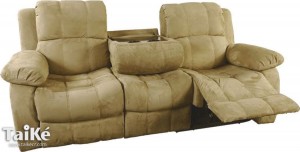 2. Determine which features are important to you. Now that you’ve decided your sofa’s function, it’s time to figure out which specific features you like. The main features to consider are the arms, the backs and the legs. Arms can be angular, rolled, padded, flared, set-back, etc. If you like to nap on the sofa, then opt for padded arms. High backs are comfortable for TV watching or for taller people, and sofas can have skirts, or different wooden leg styles. Naturally you want comfort in a sofa, so make sure it is not Tico- scaled, and that the seat depth will allow you to sit back comfortably.
2. Determine which features are important to you. Now that you’ve decided your sofa’s function, it’s time to figure out which specific features you like. The main features to consider are the arms, the backs and the legs. Arms can be angular, rolled, padded, flared, set-back, etc. If you like to nap on the sofa, then opt for padded arms. High backs are comfortable for TV watching or for taller people, and sofas can have skirts, or different wooden leg styles. Naturally you want comfort in a sofa, so make sure it is not Tico- scaled, and that the seat depth will allow you to sit back comfortably.
3. Decide exactly how the sofa will be oriented. Successfully organizing a living space starts with analyzing your lifestyle. What do you do the most in that space? Do you like to wind down in front of the TV? Make sure your couch faces that direction. Love hosting game or wine nights? Create a semi circle (or even full circle) around a central table. Does your family use the living room to lounge, relax and read? Surround your sofa with chairs and cushions to create multiple seating areas that can be enjoyed individually, or as a large group. Perhaps you have an amazing view and that is where your sofa will face.
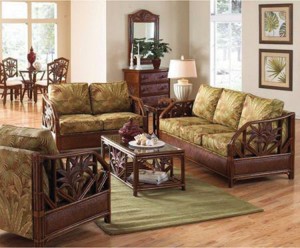 4. Research upholstery materials. Which will be best for you? Aesthetics are important, but functionality is key when it comes to choosing a material for your sofa. A lot of us that would love to indulge in a plush, white sofa – they’re so gorgeous, but so dangerous.
4. Research upholstery materials. Which will be best for you? Aesthetics are important, but functionality is key when it comes to choosing a material for your sofa. A lot of us that would love to indulge in a plush, white sofa – they’re so gorgeous, but so dangerous.
As a rule, synthetic fabrics are more durable, colourfast, cleanable and should hold up well in our climate. Tightly woven fabrics and fabrics that are heavy will stand up to wear and tear better. A practical option is to use Microfiber, and it is available in a good selection of colours, and even patterns and textures these days. Easy to clean and reasonably priced, it is a great option, but I would steer well clear of cotton and linen blends however beautiful. Sunbrella is a great choice, but an expensive one. However, there are other outdoor fabrics available which are suitable and very practical. Ask to see the swatches at your local furniture store.
Leather is another topic altogether. People purchased what they were told were leather sofas and chairs elsewhere thinking they would hold up well here and be low maintenance. Then, they asked us to recover or repair them because they are splitting or peeling. The problem is they are not real leather. Sure they look, and may even smell of leather, but often are bonded leather – which is basically reconstituted bits of leather bonded to a vinyl backing. If you choose REAL leather then this should wear well, but it is still a bit of a maintenance issue as mold does enjoy growing on all and any natural material.
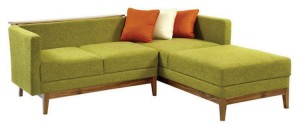 5. Choose a style that complements your home. It can be a little hard to nail down your own personal style, but most people know what they like. Go with your gut instinct when picking the type of couch that will fit naturally in your home. If you want a really tropical feel, then a rattan sofa is for you. Make sure the joints are all leather-wrapped though – split-cane wrapping will fail and unravel in no time. Quality rattan will last much longer than other alternatives.
5. Choose a style that complements your home. It can be a little hard to nail down your own personal style, but most people know what they like. Go with your gut instinct when picking the type of couch that will fit naturally in your home. If you want a really tropical feel, then a rattan sofa is for you. Make sure the joints are all leather-wrapped though – split-cane wrapping will fail and unravel in no time. Quality rattan will last much longer than other alternatives.
Woven sea grass or banana leaf seating is a popular look these days, but remember it is still a natural material and can be high maintenance and is highly susceptible to mold and decay, so you cannot expect it to have a long life in our humid climate.
If you have a small space a clean L-shape like this one from RPI is great for open areas that need to be divided – such as separating the living room from the dining room, or the main entry from the living area, and it even comes with its own sofa table. How smart is that!
If your style is sleek and modern, pick something that reflects that in clean lines and dramatic colors. If your home is more traditional, then a classically scaled sofa with traditional rolled arms could be right for you. A casual style calls for perhaps loose-back cushions and an over-stuffed comfort, and a transitional style combines the best of traditional and contemporary, and makes it a great a choice for many of today’s homes.
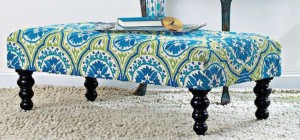 6. Pick a color: Colourful, Neutral or a Pattern?
6. Pick a color: Colourful, Neutral or a Pattern?
A colourful sofa can set the scene for the rest of your living area and be a great focal point. However, most of us will opt for ‘safe’ in this category. A neutral coloured sofa will allow you to add throw pillows that introduce colour and interest, and will stand the test of time and changing colour fads. You could always consider adding a couple of accent chairs in a bold print or colour to bump up the impact. If your space is small, you should choose a fabric with a similar visual weight as the floor: light floor = light colour fabric.
Darker colours tend to be more practical if you have kids, pets and/or renters and although not for everyone, don’t be afraid to choose a couch with a fun or unique pattern! It can add a surprisingly personal touch and quickly transform the feel of the entire room. If you’re too nervous to experiment with bolder colours and patterns in your sofa, you can always opt for a funky ottoman that can double as a coffee table. It’ll add a more subtle sense of diversity to your living room, while complementing more classic sofas and chairs.
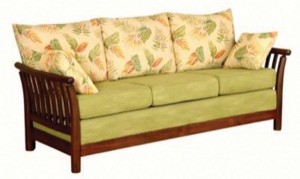 All the choices can be a bit overwhelming, so let your local furniture store help guide you through the all decisions, and you can start enjoying your brand new sofa in just a few short weeks. Your sofa is a big investment, and is also a big part of your life. Invest wisely and you will enjoy years of comfort and enjoyment from it.
All the choices can be a bit overwhelming, so let your local furniture store help guide you through the all decisions, and you can start enjoying your brand new sofa in just a few short weeks. Your sofa is a big investment, and is also a big part of your life. Invest wisely and you will enjoy years of comfort and enjoyment from it.
Until next time…
Shelagh, Royal Palm Interiors – Uvita – 2743-8323 www.royalpalminteriors.com
Like us on Facebook: www.facebook.com/RoyalPalmInteriors

